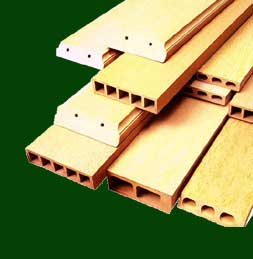The examples and perspective in this article may not include all significant viewpoints. (December 2010) |
A fiber-reinforced composite (FRC) is a composite building material that consists of three components:[1][2]
- the fibers as the discontinuous or dispersed phase,
- the matrix as the continuous phase, and
- the fine interphase region, also known as the interface.
This is a type of advanced composite group, which makes use of rice husk, rice hull, rice shell, and plastic as ingredients. This technology involves a method of refining, blending, and compounding natural fibers from cellulosic waste streams to form a high-strength fiber composite material in a polymer matrix. The designated waste or base raw materials used in this instance are those of waste thermoplastics and various categories of cellulosic waste including rice husk and saw dust.

- ^ WJ Cantwell, J Morton (1991). "The impact resistance of composite materials -- a review". Composites. 22 (5): 347–62. doi:10.1016/0010-4361(91)90549-V.
- ^ Serope Kalpakjian, Steven R Schmid. "Manufacturing Engineering and Technology". International edition. 4th Ed. Prentice Hall, Inc. 2001. ISBN 0-13-017440-8.